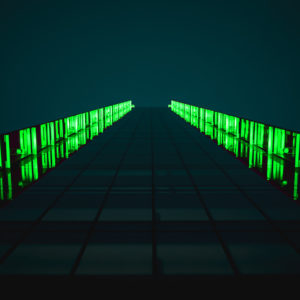Between the 12th June and 13th June, hordes of visitors and speakers came to TechXLR8, hosted at the Excel centre as the flagship event of London Tech week. With focuses and summits across a range of topics: AI, 5G, Cloud & DevOps, StartUps, Internet of Things (IoT) to name a few. Over 300 exhibitors and tech gurus showcased products and services, providing insights and firm and industry updates to over 15,000 attendees from 90 countries. For this event, Digital Corner has focused on IoT World Europe, Europe’s IoT meeting place.
The event is hosted by Informa Tech and has been running for a number of years attracting attendees from businesses across a multitude of industries: technology, agriculture, healthcare and manufacturing to name a few. Exemplifying its gravitas, the event plays host to 37% director & C-level attendees, all looking for the insights in how to unlock the potential of their assets and to turn their research and industry knowledge into value generating application in their firms.
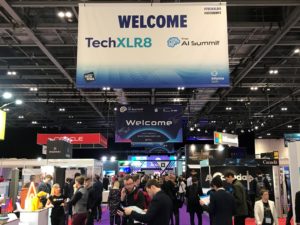
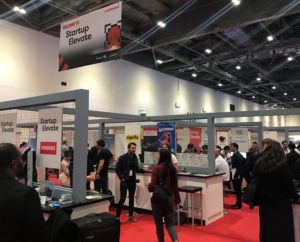
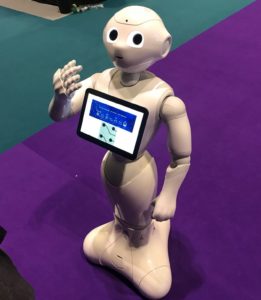
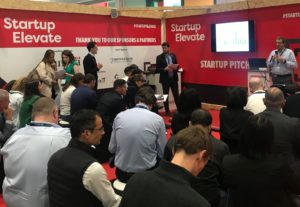
CHANGING THE WORLD WITH IOT
It’s no secret that the number of devices connected to the internet has been rapidly increasing, with the number exceeding 7 billion in 2018 (Lasse Lueth, 2018), and expected to exceed 20 billion by 2020 (Gartner, 2017). Investment in this area is likely to exceed $6 billion (USD), specifically in device hardware, data storage, connectivity and more. Business Insider (2018) have deemed this money well spent as the investment will generate $13 trillion by 2025. This continued growth will result in several pains and even more potential gains to be extracted from the growth of connectedness between devices and networks. A number of the consumer-facing developments we have seen are present today with the birth of smart homes, connected thermostats and more. A range of similar and more complex applications were present at IoT World Europe, all stemming from the evolving connectedness of devices. Before the most common themes of the event are discussed, to quote Ben Steward from Deloitte Digital, we, as an industry, should not be focused on creating shiny fixes, engineers and development teams should in fact: ‘fall in love with the problem, not the solution’. This emphasis will increase the likelihood of the process and functions that are delivered through IoT to deliver true value.
GOVERNANCE: IOT AS A SERVICE – LEVERAGING AND IMPLEMENTING NEW IOT BUSINESS MODELS
One of the most common challenges discussed during the event was surrounding the engagement with IoT by C-level execs and the corresponding wider integration into the business. During a panel debate hosted by Informa Tech with speakers from TVH Group, Gardner Denver and Orange, two critical points were raised:
- Adoption and prioritisation of IoT
- Governance
In order to build IoT focus into the business, IoT should not be seen as a vertical but as a flow between all existing verticals. Once this all-encompassing nature is recognised, top-down adoption throughout the business is likely to increase. It is only by including IoT in the key strategic communications of the firm that wider firm adoption will be achieved and the highest level of benefit to the business processes will be realised. During this communication the benefits employees are likely to see because of their IoT adoption should be clearly identified and explained, so that the change is met with little resistance. Employees are likely to find that it will be the IoT will be leveraged to generate larger efficiencies and effectiveness internally, with the monotonous or simple tasks removed from the human workforce’s repertoire; from reordering office supplies, to process monitoring. More broadly, management are likely to find that aspects in their roles such as resource optimisation, behaviour monitoring and safety will all play a part in making the IoT enabled workforce a more productive place to be.
The governance of the use of IoT needs to be achieved both at a firm level and at a global level. At the firm level, there is a clear set of responsibilities for leaders in privacy, data and technological roles to understand how IoT will affect the workplace so that benefits can be planned for and utilised and risks can be managed. It was portrayed that this was the only way of stopping technological ideas and solutions from being shot down by C-level execs before they reach fruition.
At a global level the governance of consumer security needs to be properly defined and acted upon. A significant step was made toward this in Europe with the birth of GDPR as this gives better coverage for the protection of consumers, however, it was firmly stated by the panel that Europe’s present implementation of data protection act is not a destination. There is a significant journey to be had before full and transparent consumer data protection is achieved.
THE BUSINESS-END OF IOT
There were a range of start-ups firms formed due to their innovative focus on connecting devices, nodes and networks, disrupting industries. IoT innovations are also being used to solve several real-world issues faced by exhibitors at TechXLR8, from medical to infrastructure. Two exhibitors that took to the stage to explain this were from the Schiphol Airport and The National Health Service (NHS).
IMPROVING CUSTOMER EXPERIENCE – SCHIPHOL AIRPORT
Schiphol airport, acting as one of Europe’s largest hubs is currently serving passenger numbers typical of a much larger airport. This hub has constantly increasing footfall with passenger numbers up 3.7% over the last year. Passenger expectation in terms of the function(s) the airport serves and reliability of those services is growing at an equally fast rate, creating several challenges that are being tackled by connecting devices.
Schiphol has begun an innovative journey to digitise all assets and understand that, while they may be ahead of most airports they are a long way from using autonomous or self-learning technologies. They use smart asset data to:
- Create new information products
- Provide passenger & airline information to optimise travel experience & airline processes
- Optimise processes, supporting operational performance
- Assess performance, availability and maintenance
One example of their journey to date was the mission to create a smart aircraft stand. Which was implemented by:
- Collecting available data on the airport stand
- Exploring the connections with different domains in the business to create possible use cases
- Starting testing on small functions, learning in controlled focus areas and building on it by scaling up the refined technologies and methods
- Using this short iterative approach, they rolled the smart capabilities out across all airport stands and additional devices
The real-time insights of their asset availability achieved by these IoT capabilities allow them to have improved asset availability, optimise gate planning and reduce airplane turnaround time. By connecting their assets, Schiphol are better connecting themselves to the world.
GETTING THE BALL ROLLING – NHSX
Representing the public sector at the event was the newly formed branch of the NHS – NHSX. This body was formed to help the NHS evaluate the potential benefits IoT and more broadly the digital world can offer the health service, in functions such as: GP online services, NHS Mail and Electronic Prescriptions. The Department of Health and Social Care (DHSC) had previously voiced this as a challenge as any change to the NHS had been hindered by an inability to share practises and changes across the organisation. Which leads into the main aim of NHSX.
Dr Sam Shah, NHSX Director of Digital Development talked on his focus on user experience, creating standard solutions, interoperability and the importance of partnerships. Recognising they are at the very early stages of their journey toward a digitised NHS. During the planning stage the organisation wishes to instil high levels of standardisation across the organisation, allowing them to partner with innovators and experts in the relevant industries and allow their networks to be easily facilitated by solutions or services in the market. NHSX are actively seeking a multi-vendor group to come together to solve the business problems they have.
WHAT’S NEXT?
It is clear from the event that London Tech week truly is Europe’s meeting point for the tech industry. In most scenarios, key players across the industry can all relate to the unknowns of the industry’s future and the acceptance that as an industry we are in our infancy. If you are keen to read more about the developments during IoT World Europe, stay tuned to the IoT World Europe home page via this link.
Reference List
Business Insider (2018) Link: https://www.businessinsider.com/internet-of-things-definition?r=US&IR=T
Lasse Louthe (2018) Link: (https://iot-analytics.com/state-of-the-iot-update-q1-q2-2018-number-of-iot-devices-now-7b/)
Gartner (2017) Link: (https://www.gartner.com/imagesrv/books/iot/iotEbook_digital.pdf)

